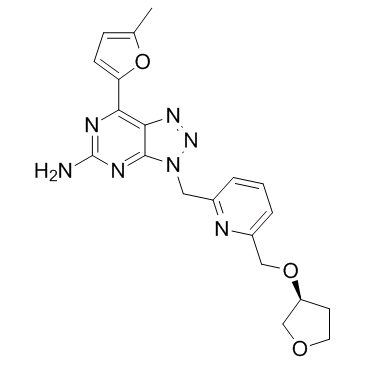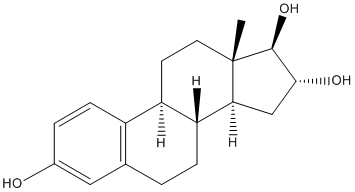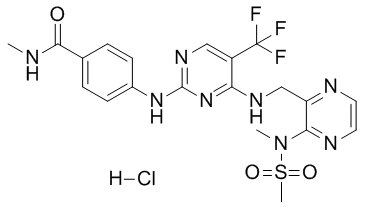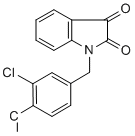No significant changes were observed in the surface endogenous GluR1 in the Tmub1/HOPS-RNAi neurons, as compared to the control neurons, suggesting that Tmub1/HOPS selectively regulates GluR2 and not GluR1. Similarly, interference with the NEEP21-GRIP or PICK1-GRIP interactions did not impair the surface expression of endogenous GluR1. Our results from the Tmub1/ HOPS overexpression experiments were consistent with those of the Tmub1/HOPS-RNAi experiments. The surface expression of GluR2, but not of GluR1, was increased in the Tmub1/HOPS-overexpressing neurons. Similarly, the expression of full-length GRIP enhanced the surface expression of coexpressed GluR2, suggesting that GRIP actively promotes GluR2 surface trafficking. Taken together, our immunostaining results and previous reports of the AMPAR surface staining suggest that the maintenance of the synaptic surface expression of GluR2 requires various interactions among non-PDZ proteins, PDZ proteins, and GluR2. Further, those interactions appear to affect the GluR2 subunit selectively. The amount of internalized GluR2 during 10 min did not differ significantly between the Tmub1/HOPS-RNAi and control neurons, suggesting that Tmub1/HOPS is not related to the endocytosis of GluR2 in the steady state. Recycling of the internalized GluR2 to the cell surface was significantly delayed in the Tmub1/HOPS-RNAi neurons, indicating that Tmub1/HOPS is related to the pathway by which GluR2 is recycled to the cell surface. Likewise, the inhibition of the NEEP21-GRIP and GRIP-PICK1 interactions delays the recycling of GluR2, suggesting that they are required for the recycling of GluR2 back to the plasma membrane. Consistent with our results of immunostaining of the surface endogenous GluR1, the internalization and recycling of GluR1 did not differ significantly between the Tmub1/HOPSRNAi and control  neurons. The inhibition of the NEEP21-GRIP interaction also did not affect the internalization and the recycling of GluR1. Therefore, Tmub1/HOPS appears to regulate the recycling of GluR2, which also requires multiple interactions such as those of NEEP21-GRIP and GRIP-PICK1. The results from the neurons overexpressing Tmub1/HOPS were consistent with those from the Tmub1/HOPS-RNAitransfected neurons. The internalization of GluR2 did not change but the recycling of GluR2 varied significantly, supporting that Tmub1/HOPS is related to the recycling of GluR2 but not to the internalization of GluR2. The level of GluR2 or GluR1 recycled to the surface in the control cells appeared to be relatively low as compared to that in other reports, although the time scales used by us were slightly different. In the absence of neuronal activity, internalized AMPARs are sorted for Homatropine Bromide either Mepiroxol degradation or reinsertion at synapses ; however, upon incubation with AMPA or NMDA/TTX, AMPARs are more actively directed into the recycling pathway. Because we did not use any artificial stimulation in our recycling assay, some AMPARs may spontaneously be sorted for lysosomal degradation, which was represented as a rather lower recycling ratio in the control cells, as compared to other reports. In surface-receptor regulation, Tmub1/HOPS appears to act contrary to ubiquitin and the UBL protein SUMO. While ubiquitin and SUMO decrease the surface number of their target receptors, Tmub1/HOPS increases the surface number of AMPARs. Like Tmub1/HOPS, some other UBL domaincontaining proteins, such as Plic-1/ubiquilin-1 and GABARAP/ ubiquilin-2, also increase the surface number of their receptors although the underlying mechanisms may be somewhat different.
neurons. The inhibition of the NEEP21-GRIP interaction also did not affect the internalization and the recycling of GluR1. Therefore, Tmub1/HOPS appears to regulate the recycling of GluR2, which also requires multiple interactions such as those of NEEP21-GRIP and GRIP-PICK1. The results from the neurons overexpressing Tmub1/HOPS were consistent with those from the Tmub1/HOPS-RNAitransfected neurons. The internalization of GluR2 did not change but the recycling of GluR2 varied significantly, supporting that Tmub1/HOPS is related to the recycling of GluR2 but not to the internalization of GluR2. The level of GluR2 or GluR1 recycled to the surface in the control cells appeared to be relatively low as compared to that in other reports, although the time scales used by us were slightly different. In the absence of neuronal activity, internalized AMPARs are sorted for Homatropine Bromide either Mepiroxol degradation or reinsertion at synapses ; however, upon incubation with AMPA or NMDA/TTX, AMPARs are more actively directed into the recycling pathway. Because we did not use any artificial stimulation in our recycling assay, some AMPARs may spontaneously be sorted for lysosomal degradation, which was represented as a rather lower recycling ratio in the control cells, as compared to other reports. In surface-receptor regulation, Tmub1/HOPS appears to act contrary to ubiquitin and the UBL protein SUMO. While ubiquitin and SUMO decrease the surface number of their target receptors, Tmub1/HOPS increases the surface number of AMPARs. Like Tmub1/HOPS, some other UBL domaincontaining proteins, such as Plic-1/ubiquilin-1 and GABARAP/ ubiquilin-2, also increase the surface number of their receptors although the underlying mechanisms may be somewhat different.
Month: May 2019
Interestingly RPE cells co-cultured with retinal microglia did not undergo higher rates of apoptosis
Significantly, activated microglia have also been found in the subretinal space of patients with AMD, and are juxtaposed in close proximity with RPE cells overlying drusen. Additionally, in a number of mouse models for AMD, involving the absence of chemokine ligands/receptors, CCL2 and/or CX3CR1, microglia accumulation in the subretinal space was accelerated and more pronounced. This accumulation of subretinal microglia was in turn associated with multiple features reminiscent of AMD histopathology including the accumulation of drusen-like deposits, local RPE structural changes, and CNV formation. The anatomical separation between retinal microglia and RPE cells under normal conditions and their juxtaposition into direct and intimate contact in the subretinal space under pathological situations suggest that cellular interactions between these two retinal cell types may be of particular pathogenetic significance. Microglia, serving as resident immune cells of the retina, can have multiple functional states and carry out diverse functions. Capable of rapid dynamism and motility, they also synthesize and release multiple cytokines, chemokines, neurotrophic factors, and neurotransmitters that allow them to interact with multiple CNS cell types and exert cytotoxic or cytoprotective effects depending on the tissue context. While there has been evidence that retinal microglia may interact with signals from retinal neurons, photoreceptors, and retinal vessels, the direct influences of retinal microglia on RPE structure, physiology, and gene expression have not been previously addressed. An understanding of the nature of this cell-cell interaction has the potential to shed useful light on the cellular basis of the inflammatory etiology of AMD. In this study, we examined the nature of microglia-induced effects on RPE cells using an  in vitro co-culture model where cultured activated mouse retinal microglia were co-cultured with primary RPE cells from animals of the same genetic background. We examined the consequences of Ginsenoside-F2 microglial co-culture on RPE structure, physiology, and the expression and secretion of molecules important in influencing the inflammatory and angiogenic environment in the subretinal space. In addition, we employed an in vivo model of microglia-RPE interactions by transplanting cultured microglia into the subretinal space of experimental mice. Our results show that signals from activated retinal microglia prominently alter the structure, properties, and gene expression of RPE cells both in vitro and in vivo. These alterations constitute a disorganization of the RPE monolayer and create a pro-inflammatory environment in the subretinal space conducive for the further recruitment of retinal microglia and for the formation of CNV. The similarities between these alterations and the important clinical features found in AMD strongly suggest that microglia-RPE interactions play an important and determining role in the pathogenesis of AMD. Microglia-RPE interactions may represent a potential locus of therapeutic intervention in the treatment and prevention of Ginsenoside-F4 vision loss in AMD. In the present study, we found that as a consequence of coming into close proximity with activated retinal microglia, primary RPE cells developed multiple structural and functional alterations. These involved decreased expression levels of visual cycle protein, RPE65, and proteins in the tight junctions, a disruption of ZO-1 localization in cell junctions, and a loss of regular RPE cell shape and distribution.
in vitro co-culture model where cultured activated mouse retinal microglia were co-cultured with primary RPE cells from animals of the same genetic background. We examined the consequences of Ginsenoside-F2 microglial co-culture on RPE structure, physiology, and the expression and secretion of molecules important in influencing the inflammatory and angiogenic environment in the subretinal space. In addition, we employed an in vivo model of microglia-RPE interactions by transplanting cultured microglia into the subretinal space of experimental mice. Our results show that signals from activated retinal microglia prominently alter the structure, properties, and gene expression of RPE cells both in vitro and in vivo. These alterations constitute a disorganization of the RPE monolayer and create a pro-inflammatory environment in the subretinal space conducive for the further recruitment of retinal microglia and for the formation of CNV. The similarities between these alterations and the important clinical features found in AMD strongly suggest that microglia-RPE interactions play an important and determining role in the pathogenesis of AMD. Microglia-RPE interactions may represent a potential locus of therapeutic intervention in the treatment and prevention of Ginsenoside-F4 vision loss in AMD. In the present study, we found that as a consequence of coming into close proximity with activated retinal microglia, primary RPE cells developed multiple structural and functional alterations. These involved decreased expression levels of visual cycle protein, RPE65, and proteins in the tight junctions, a disruption of ZO-1 localization in cell junctions, and a loss of regular RPE cell shape and distribution.
Diluted out in making direct comparisons of the affected versus relative to the evidence for association
Unusual patterns of inheritance were also observed when comparing genotype-wise associations in children versus mothers suggesting that there may be a direct effect of mother��s genotype, or that there may be parent-of-origin effects, i.e. that for the child it is the origin of, and not just the combination of, alleles that is important in determining disease risk. Using a log-linear method previously designed to evaluate maternal genotype and/or parent-of-origin effects in case-parent trios. The isoform without exon 10 has not been previously reported. Since there is no expressed sequence tag cDNA or RNA evidence for this spliced variant reported in the ENSEMBL genome database, we cannot be certain that this transcript is translated into a functional protein. For the known functional exon 10-containing isoform at ABCA4 we found that 4 of the 5 EBV lines that were heterozygous for genomic DNA showed monoallelic Epimedoside-A expression in cDNA for the exon 10 Yunaconitine rs3112831 SNP. This mono-allelic expression was observed independently in multiple RNA extractions from each of which multiple cDNA preparations were made from these EBV cell lines, demonstrating that this was not due to chance events in amplification of the cDNA. Examining parental genotypes in the EBV cell bank, we determined that the paternally-derived allele is silenced for the exon10-containing isoform of ABCA4. However, given the small sample of polyclonal EBV cell lines examined we cannot state definitively that it is always the paternally-derived allele that is silenced. Hence, this could represent random choice autosomal monoallelic expression, which has recently been shown to be more common in the genome than was previously supposed. This could also account for the apparent polymorphic nature of the silencing, since a majority of genes showing random choice autosomal monoallelic expression display biallelic expression in some clonal cell lines. Since all the EBV cell lines employed here were polyclonal, imprinting currently provides the more likely explanation for the monoallelic expression we observed. We also demonstrated monoallelic expression for a SNP in exon 7 in cDNA specifically amplified for the IIB short form of COL2A1, but not for cDNA amplified for the IIA long form, consistent with isoform-specific imprinting in this case with the maternally-derived allele silenced. This fits with the observation that COL2A1 lies within a cluster of genes on human chromosome 12q13.11 syntenic with mouse chromosome 15 band F2 that are known to be maternally imprinted, although again we cannot definitively exclude autosomal random mono-allelic expression. Herein we examined the specific genetic hypothesis that  polymorphisms in two genes known to be associated with ocular disease, ABCA4 and COL2A1, are associated with ocular disease caused by congenital toxoplasmosis. Evidence for genetic associations observed initially in a European cohort was replicated in an independently ascertained cohort from North America. One value of genetic association studies is that they provide concrete insight into processes that determine clinical outcome of disease, in this case events that may occur in embryonic development when it is not easy to determine what is happening when the fetus is infected with a parasite such as T. gondii, or what the parasite is doing during early post-natal development. We chose to look specifically for associations with ABCA4 and COL2A1 because both had defined single gene disorders that result in congenital or early onset ocular disease.
polymorphisms in two genes known to be associated with ocular disease, ABCA4 and COL2A1, are associated with ocular disease caused by congenital toxoplasmosis. Evidence for genetic associations observed initially in a European cohort was replicated in an independently ascertained cohort from North America. One value of genetic association studies is that they provide concrete insight into processes that determine clinical outcome of disease, in this case events that may occur in embryonic development when it is not easy to determine what is happening when the fetus is infected with a parasite such as T. gondii, or what the parasite is doing during early post-natal development. We chose to look specifically for associations with ABCA4 and COL2A1 because both had defined single gene disorders that result in congenital or early onset ocular disease.
Broccoli consumption was also associated with alterations in mRNA processing being further explored
It is likely that the major bioactive products derived from broccoli are the isothiocyanates, sulforaphane and iberin. These have been shown to have a multitude of biological activities in cell models consistent with anticarcinogenic activity. However, these studies largely involve exposing cells to concentrations of SF and IB far in excess of those which occur transiently in the plasma after broccoli consumption, and are mediated by the intracellular activity of the ITCs by, for example, perturbing intracellular redox status, depletion of glutathione and perturbation of the Keap1Nfr2 complex. We question whether these processes would occur in vivo, as any of the ITCs entering cells would immediately be inactivated through conjugation with glutathione that would be present in relatively high concentration. Thus, we explored whether the biological activity of ITCs may be mediated through their chemical interaction with signalling peptides within the extracellular environment of the plasma, which has a low glutathione concentration. We demonstrated that ITCs readily form thioureas with signalling Ergosterol proteins in the plasma through covalently bonding with the N-terminal residue. It is likely that ITCs chemically react with other plasma proteins and a global analysis of plasma protein modifications by ITCs is warranted. It is also possible that other types of chemical modification of plasma proteins by ITCs may occur, such as covalent bonding through cysteine and lysine residues. Previous studies have shown that isothiocyanate-derived thioureas modify the physicochemical and enzymatic properties of the parental proteins. Thus, it is possible that the perturbation of signalling pathways in the prostate is mediated by protein modifications that occur in the extracellular environment. We provide further evidence for this hypothesis by demonstrating that pre incubation of TGFb1 with a physiological appropriate concentration of SF, followed by dialysis for 4 h to simulate SF pharmacokinetics, results in enhanced Smadmediated transcription. As TGFb1/Smad-mediated transcription inhibits  cell proliferation in non-transformed cells, the enhancement of Smad-mediated transformation by SF would be consistent with the anticarcinogenic activity of broccoli, in addition to reduced risk of myocardial infarction. In certain circumstances, enhancement of TGFb signalling has been associated with tumour progression within already initiated cells, although the precise pathways by which this is mediated have not been fully resolved. To what extent a broccoli-rich diet may influence these processes requires further studies. However, we consider it likely that it is the net effect of changes in several pathways, as opposed to just TGFb1, which may underlie the observed reduction in both cancer and myocardial infarction through broccoli/crucifer consumption. A previous study has demonstrated that isothiocyanates can inhibit EGF signalling, but without a mechanistic explanation. In the current study, we show that SF will bind to the EGF ligand, and this may underlie our results and those reported previously. Moreover, chemical modification of signaling proteins by ITCs may be complemented by modification of receptor proteins, as has previously been shown for the TRPA1 receptor. Perturbation of signalling pathways is additionally determined by GSTM1 genotype. The interaction between diet and GSTM1 on gene expression may Ginsenoside-F5 partially explain the contradictory results from those case control studies which lack dietary assessment and which have or have not associated the GSTM1 null genotype with enhanced risk of prostate cancer.
cell proliferation in non-transformed cells, the enhancement of Smad-mediated transformation by SF would be consistent with the anticarcinogenic activity of broccoli, in addition to reduced risk of myocardial infarction. In certain circumstances, enhancement of TGFb signalling has been associated with tumour progression within already initiated cells, although the precise pathways by which this is mediated have not been fully resolved. To what extent a broccoli-rich diet may influence these processes requires further studies. However, we consider it likely that it is the net effect of changes in several pathways, as opposed to just TGFb1, which may underlie the observed reduction in both cancer and myocardial infarction through broccoli/crucifer consumption. A previous study has demonstrated that isothiocyanates can inhibit EGF signalling, but without a mechanistic explanation. In the current study, we show that SF will bind to the EGF ligand, and this may underlie our results and those reported previously. Moreover, chemical modification of signaling proteins by ITCs may be complemented by modification of receptor proteins, as has previously been shown for the TRPA1 receptor. Perturbation of signalling pathways is additionally determined by GSTM1 genotype. The interaction between diet and GSTM1 on gene expression may Ginsenoside-F5 partially explain the contradictory results from those case control studies which lack dietary assessment and which have or have not associated the GSTM1 null genotype with enhanced risk of prostate cancer.
Gene expression profiling studies have been performed with the aim of dissecting the molecular subtypes of several neoplasms
In an effort to predict accurately tumor behavior and to identify important oncogenic genes and biological pathways. These studies have revealed the presence of unique gene expression signatures distinguishing specific subgroups of cancers and have served to improve our understanding of the biology of these diseases. However, only part of the cellular information is contained at the messenger RNA level, and transcriptional activity is dependent on multiple factors. Among these factors are epigenetic marks, such as cytosine methylation and histone tail modifications, which help to determine and regulate chromatin structure and function including gene expression. Therefore, while gene expression studies using DNA microarrays have had a great impact in the study of cancer, it is important to recognize that there are limitations associated with this technique. Firstly, gene expression microarrays capture a snapshot of the cell’s transcriptome, detecting genes being actively Benzethonium Chloride transcribed at the time of RNA extraction, but they do not capture any information concerning the genes’regulatory states and consequently their potential for transcriptional changes in response to stimuli. For example, a locus such as the O6methylguanine DNA methyltransferase gene is not prognostically useful in terms of its basal expression state but the cytosine methylation status of its promoter provides an excellent indicator of how well gliomas will respond when treated by alkylating agents. We hypothesize that Lomitapide Mesylate biologically significant changes in expression can be missed by expression arrays due to technical limitations, but might be captured by epigenomic studies by identifying genes at which promoter cytosine methylation or H3K9 acetylation differ and testing them with highly-quantitative techniques. In order to test these hypotheses, we carried out genome-wide studies for DNA methylation and H3K9 acetylation as well as gene expression microarrays in patients with acute myeloid and lymphoblastic leukemia. These cell types were chosen so that we could test whether the technical approach we were exploring was feasible in typical clinical samples, using cell types that should be markedly distinctive. We show here that the integration of the information captured by these different platforms results in a more comprehensive detection of differentially regulated genes and an enhancement of the apparent biological relevance of the findings. Histone modifications and DNA methylation play a critical role in regulating gene expression by modifying the chromatin structure of genes and recruiting additional regulatory factors. Our work is based on the hypothesis that a truly integrated epigenomic analysis could yield superior insight  into the transcriptional programming of cancer cells beyond that obtained by simply measuring abundance of mRNAs through expression microarrays, since epigenetic modifications will capture information not only from genes being actively transcribed, but they will also reflect the availability for transcription by informing on the chromatin structure at specific loci. As proof of principle, we selected two functionally validated epigenetic marks�Ccytosine methylation and histone 3 lysine 9 acetylation�Cin addition to standard gene expression arrays and tested their ability to identify gene regulatory differences between the AML and ALL cell types. First, we demonstrate that such multiplatform epigenomic studies can be readily performed in enriched leukemia cells from standard clinical trial patient specimens.
into the transcriptional programming of cancer cells beyond that obtained by simply measuring abundance of mRNAs through expression microarrays, since epigenetic modifications will capture information not only from genes being actively transcribed, but they will also reflect the availability for transcription by informing on the chromatin structure at specific loci. As proof of principle, we selected two functionally validated epigenetic marks�Ccytosine methylation and histone 3 lysine 9 acetylation�Cin addition to standard gene expression arrays and tested their ability to identify gene regulatory differences between the AML and ALL cell types. First, we demonstrate that such multiplatform epigenomic studies can be readily performed in enriched leukemia cells from standard clinical trial patient specimens.